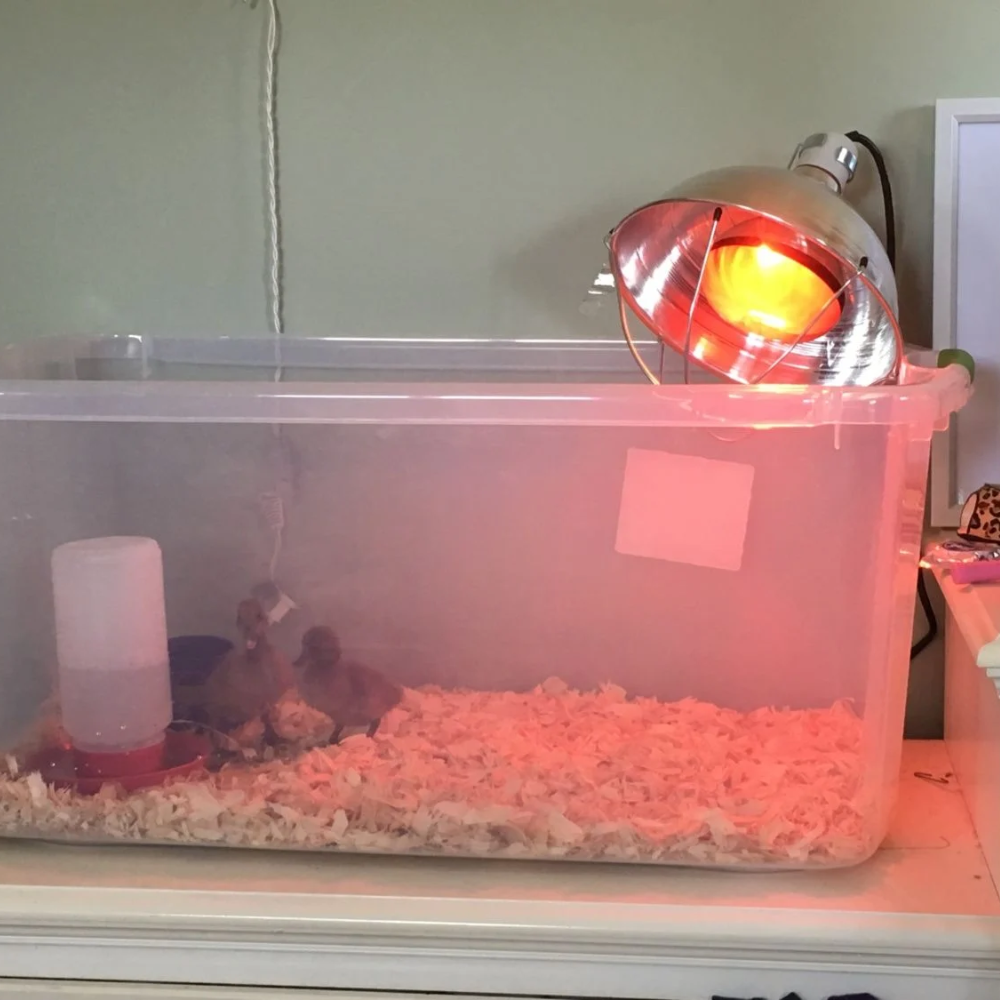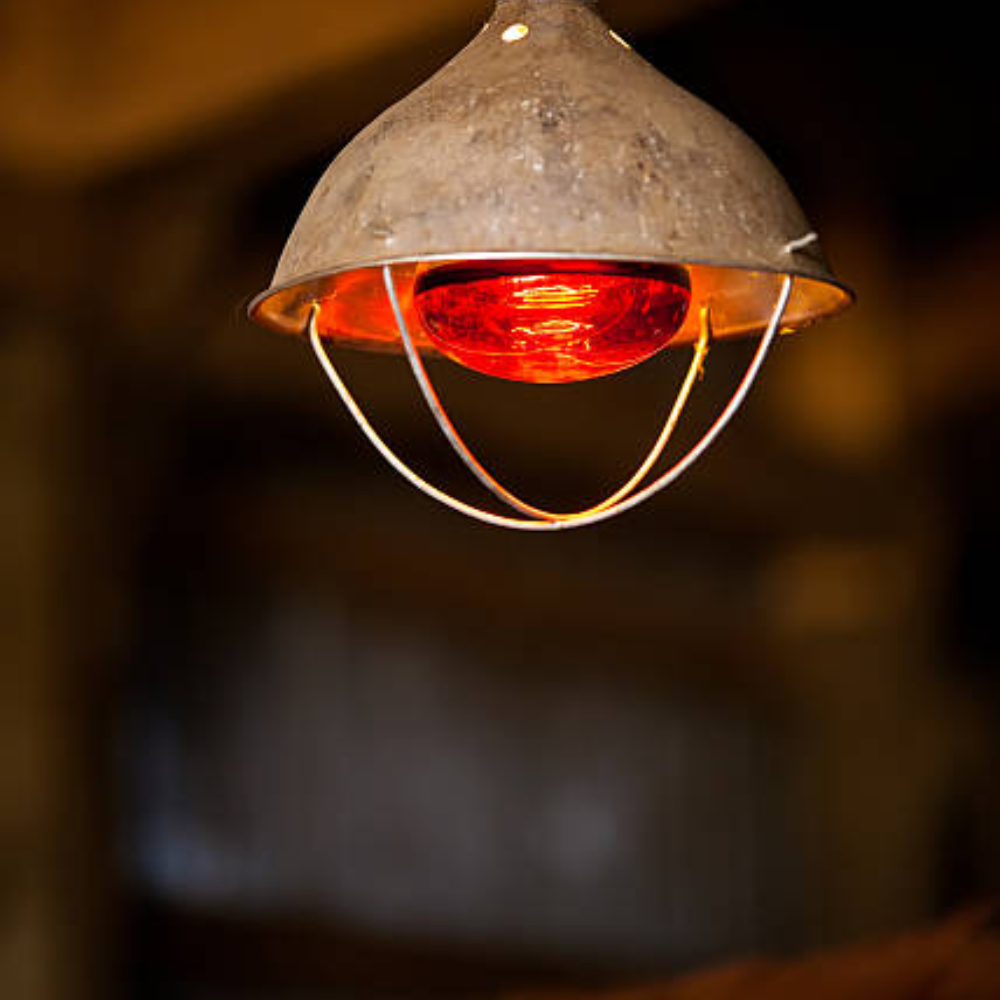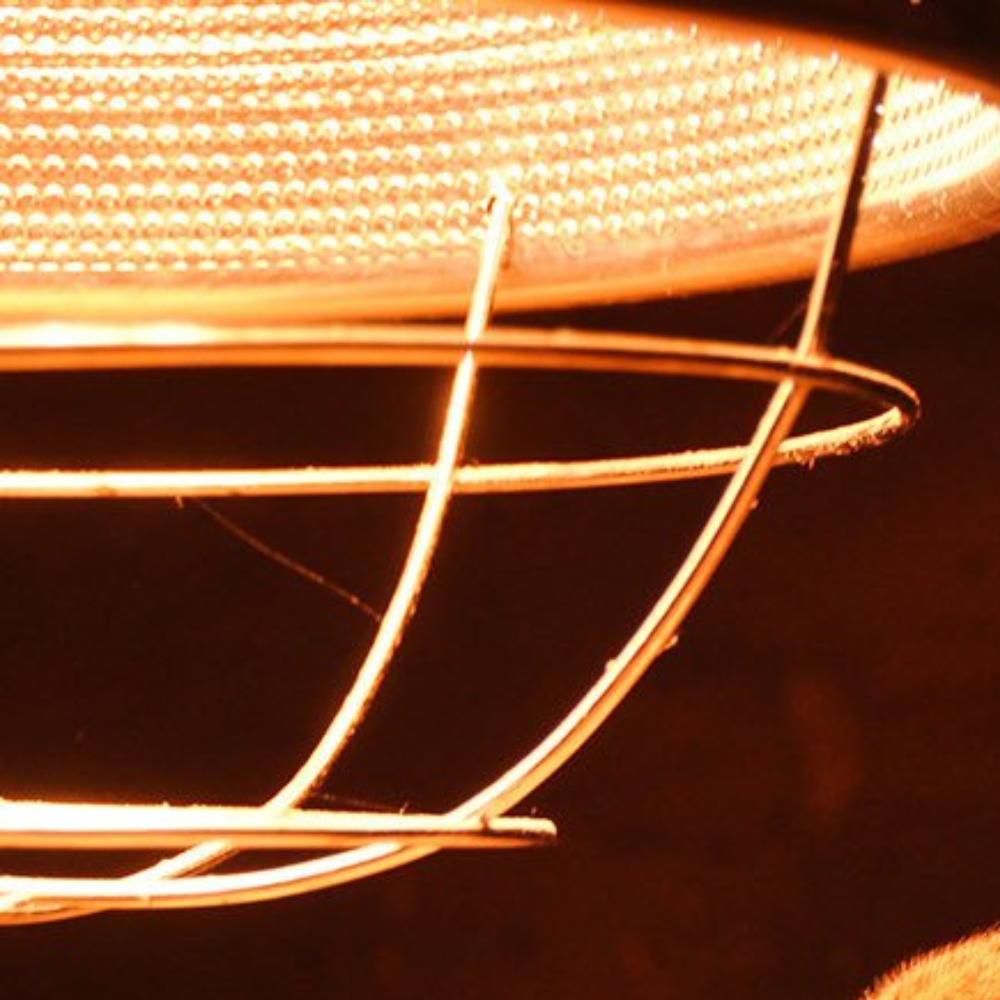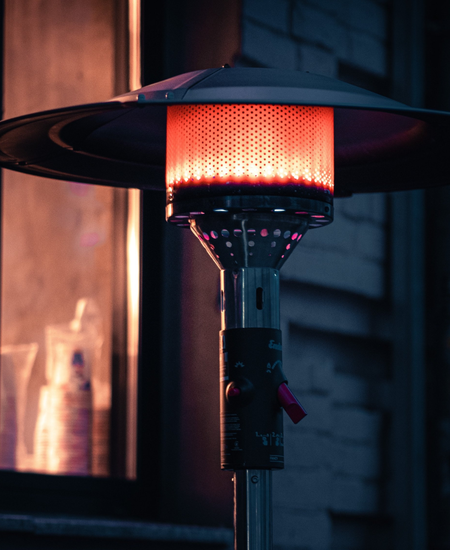Heat lamps are used in a variety of settings to provide warmth and comfort, particularly in outdoor or poorly insulated areas.
They come in various designs, including free-standing, wall-mounted and ceiling-mounted models. These lamps typically use halogen bulbs or infrared technology to generate heat quickly and efficiently.
While they offer many benefits, there is also concern about whether heat lamps can cause fires. This topic has garnered attention due to several incidents where heat lamps have been involved in house fires. In this article, we will explore the potential fire hazards associated with heat lamps and what precautions can be taken to ensure their safe use.
Understanding Heat Lamps
Heat lamps work by emitting infrared radiation, which is a form of electromagnetic energy that directly heats objects in its path.
This makes them an effective source of heat as they do not warm up the surrounding air, but rather the objects they are pointed at. They can be used for various purposes such as keeping food warm in restaurants, providing warmth to outdoor seating areas, or even drying paint or glue in industrial settings.
Most heat lamps use halogen bulbs that produce intense levels of heat and light. These bulbs can reach high temperatures quickly and can pose a fire hazard if not used properly. Another type of heat lamp uses ceramic elements and produces less intense heat, making them safer to use.
Plus, heat lamps may also come with features such as timers and thermostats to control the intensity and duration of the heat.
Can Heat Lamps Cause Fires?

When discussing whether heat lamps can cause fires, it is essential to consider several factors, including their design, installation, and usage. The risk of fire typically arises when heat lamps are positioned too close to flammable materials, such as paper, cloth, or even certain types of furniture.
Halogen bulbs, in particular, can become extremely hot and may ignite nearby combustible items if proper distances are not maintained. Additionally, failure to follow manufacturer recommendations regarding installation and use can significantly increase fire risk.
Moreover, heat lamps that are improperly maintained—such as those with damaged cords or exposed wires—can present electrical hazards leading to potential fires. It’s crucial to inspect heat lamps regularly for any signs of wear or damage. Safe practices, such as placing heat lamps on stable surfaces, using protective guards, and ensuring they are turned off when unattended, can further mitigate risks.
Furthermore, locations such as outdoor settings can introduce additional challenges; wind may blow debris into the heat lamp, increasing fire potential. Being aware of these factors and adhering to safety guidelines is vital for preventing accidents. Ultimately, while heat lamps do carry some fire risk, understanding their operation and implementing safety measures can significantly reduce these hazards in various environments.
Why Safety Precautions are Important
Safety precautions should always be a top priority, especially when dealing with potential fire hazards. Heat lamps are no exception, as they can pose significant dangers if not used correctly. Taking the necessary safety measures can prevent fires and other accidents that can cause harm to individuals or property.
One important precaution to take is selecting suitable heat lamp models for their intended use. For instance, using outdoor-rated lamps for outdoor settings is critical as they are designed to withstand outdoor conditions such as rain and wind.
Additionally, following manufacturer guidelines on installation and usage is crucial. This includes maintaining proper distances between the heat lamp and any flammable materials, ensuring proper ventilation, and using the appropriate wattage for the intended area.
Plus, regular inspections and maintenance can help identify any potential hazards before they become major issues. It is also essential to educate users on the proper use of heat lamps and how to respond in case of an emergency.
Does the Type of Heat Lamp Matter?

As mentioned earlier, there are various types of heat lamps available on the market. While all heat lamps have the potential to cause fires if not used correctly, some may pose higher risks than others.
Halogen bulbs, with their intense heat and light output, can be more prone to causing fires if not handled carefully. Ceramic element heat lamps, on the other hand, produce less intense heat and are generally considered safer.
It is crucial to consider factors such as bulb type, wattage, and installation guidelines when selecting a heat lamp for a specific setting. Assessing these variables can help determine which type of lamp is most suitable for your needs and poses the least fire risk.
Why A Good Quality Heat Lamp Matters
While it may be tempting to opt for a cheaper, lower quality heat lamp, investing in a good quality one can make all the difference when it comes to fire safety. Good quality heat lamps are designed with safety features such as overheat protection and sturdy construction that can withstand outdoor elements.
Additionally, higher-quality lamps typically come with detailed installation and usage instructions from the manufacturer, reducing the risk of accidents caused by improper handling or installation.
Investing in a good quality heat lamp also means you are more likely to receive prompt customer service and support if any issues arise. This can provide peace of mind knowing that your heat lamp is not just providing warmth but also ensuring the safety of your environment.
Ultimately, while heat lamps can pose some fire risk, selecting a good quality one and following safety precautions can significantly reduce any potential hazards. Always prioritize safety when using heat lamps to prevent accidents and ensure their effective and safe use in various settings.
How To Choose The Right Heat Lamp For Your Needs

When it comes to selecting the right heat lamp for your needs, there are several factors to consider. First and foremost, determine the purpose of the heat lamp. Will it be used for outdoor seating areas, industrial settings, or other specific environments?
Next, consider the size and layout of the area you want to heat. This will help determine the appropriate wattage needed for effective heating.
It is also essential to research and compare different types of heat lamps available on the market. As discussed earlier, halogen bulbs produce more intense heat than ceramic element lamps. Additionally, some models may come with added features such as timers or thermostats, which can be beneficial for specific purposes.
Furthermore, consider the durability and safety features of the heat lamp. Look for models with overheat protection, sturdy construction, and proper ventilation to reduce fire risks.
It is also recommended to purchase heat lamps from reputable manufacturers and retailers. This ensures that you are getting a quality product and can easily access customer support if needed.
Lastly, always follow manufacturer guidelines for installation and usage to ensure safe operation of your chosen heat lamp. With these considerations in mind, you can select the right heat lamp that meets your needs while prioritizing safety.
Is Regular Maintenance Important?
Regular maintenance is crucial for ensuring the safe and efficient operation of heat lamps. Over time, components such as bulbs or electrical connections may wear out and become potential fire hazards if not addressed.
It is recommended to inspect heat lamps periodically, checking for any signs of damage or malfunction. This can include replacing worn-out bulbs or damaged cords and ensuring proper ventilation and distance from flammable materials.
Additionally, regular cleaning is essential to remove any debris or buildup that could potentially ignite when exposed to high temperatures. This is especially important for outdoor settings where wind may blow debris into the heat lamp, increasing fire risks.
Moreover, educating users on how to properly use and maintain heat lamps can also prevent accidents. This includes turning off the lamp when not in use, keeping flammable materials at a safe distance, and avoiding overcrowding or obstructing ventilation.
Tips for A Safe Heat Lamp

Here are some additional tips for ensuring the safe use of heat lamps:
- Always follow manufacturer guidelines for installation and usage.
- Regularly inspect and maintain heat lamps to prevent potential hazards.
- Use outdoor-rated lamps for outdoor settings and ensure proper distances from flammable materials.
- Educate users on how to properly use and respond in case of emergencies.
- Select a good quality heat lamp with safety features such as overheat protection and sturdy construction.
- Consider the purpose, size, and layout of the area when selecting a heat lamp.
- Compare different types of heat lamps available on the market and choose one that meets your specific needs.
- Purchase from reputable manufacturers and retailers for a quality product and customer support.
By following these tips, you can safely and effectively use heat lamps in various settings without compromising on fire safety. Remember to prioritize safety at all times to prevent accidents and ensure the longevity of your heat lamp.
FAQs
Can a traditional heat lamp cause a fire?
Yes, a traditional heat lamp can cause a fire if not used properly. The fire department often warns about the huge risk of placing heat bulbs too close to flammable materials, as the radiant heat can ignite a fire.
How can I reduce the fire risk from a heat source like a heat lamp?
To reduce the fire risk from a heat source, such as a heat lamp, ensure proper installation and use the correct light bulb wattage. The fire department recommends keeping a safe distance between the heat source and flammable objects.
Are heat bulbs a huge risk for starting fires in barns?
Yes, heat bulbs are a huge risk for starting fires in barns if not installed correctly. The fire department advises using caution when providing supplemental heat for animals, such as chicks, and ensuring the heat source is secure.
How many chicks can safely use a heat lamp without causing a fire risk?
When using a heat lamp for chicks, it's important to monitor how many chicks are in the basking spot. Overcrowding can increase the fire risk by creating more flammable debris near the radiant heat source.
Can a traditional heat lamp for chicks be replaced with a safer option?
Yes, instead of using a traditional heat lamp, some people opt to use radiant heat panels or mother hens to provide supplemental heat, which can use less electricity and reduce the fire risk.
What should I do if my heat source, like a heat lamp, seems unsafe?
If your heat source seems unsafe, contact your local fire department for guidance. They can offer advice on safer alternatives or suggest ways to reduce the fire risk from your light bulb or heat lamp setup.
Conclusion
In conclusion, heat lamps can be a convenient and efficient way to provide warmth in various settings. However, they also pose potential fire hazards if not used properly or of low quality. By selecting a good quality heat lamp, following safety precautions, and regularly maintaining it, you can minimize any risks and enjoy the benefits of a reliable source of heat.
Always prioritize safety when using heat lamps to prevent accidents and ensure their effective use in different environments. With the right precautions and considerations, you can safely incorporate heat lamps into your daily life without worrying about fire risks.
So whether you need them for outdoor seating areas or industrial settings, always remember to choose wisely and follow recommended guidelines for safe usage.
Subscribe to our email newsletter and unlock access to members-only content and exclusive updates.

Comments